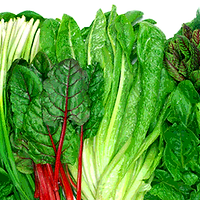Last month, the California Leafy Greens Marketing Agreement (LGMA) Board approved changes to its rigorous food safety standards, or metrics, with respect to animal intrusion and composting practices, according to an Aug. 28 blog post by LGMA board chairman Ryan Talley. These actions, Talley said, represent a significant step forward in the evolution of food safety standards for leafy greens and will provide an improved system to assess and reduce potential risk in leafy greens fields while reducing the impact of food safety metrics on the environment.
Talley elaborated:
The changes to LGMA metrics are a result of months of work throughout the leafy greens industry. The effort was led by Western Growers — under the direction of Hank Giclas, the company's senior vice president of strategic planning, science and technology — in collaboration with university scientists, industry food safety experts, farmers and shippers of leafy greens products, and the environmental community. Throughout this process, the industry has spent hundreds of man-hours reviewing current food safety research, talking with government regulators, and meeting with scientists, environmentalists and industry representatives to fully vet these new food safety standards through an open and transparent process.
The LGMA technical committee, under the guidance of chairman Tom Mack, also spent a great deal of time reviewing and discussing proposed changes before making a recommendation to accept the revised metrics to the full Board.
The first priority for leafy greens farmers is always to protect public health and ensure our products are safe for consumers. But as farmers, we are also conscious that our practices can impact the environment. One of the important benefits of the LGMA food safety model is that we can incorporate new science to improve our practices and update them as necessary. These changes are a perfect example of the leafy greens industry working proactively to improve food safety and, at the same time, work diligently to address a number of different concerns. The result is that scientists from food safety and environmental disciplines have expressed their approval of the new changes.
To be fair, many LGMA handlers are already implementing practices very similar to those included in these new metrics through our own company procedures. With the action to officially adopt these new practices, the LGMA Board is providing more specificity as to how we must assess and mitigate potential risks from animal intrusion. Beginning this fall and winter, government auditors will be verifying that the practices are being followed as part of the mandatory audits. The LGMA will be working in the coming months to educate industry about the new metrics and to be sure that training is provided so that all on-farm personnel can comply with the new standards. In this way, these new metrics will become a part of our food safety culture.



